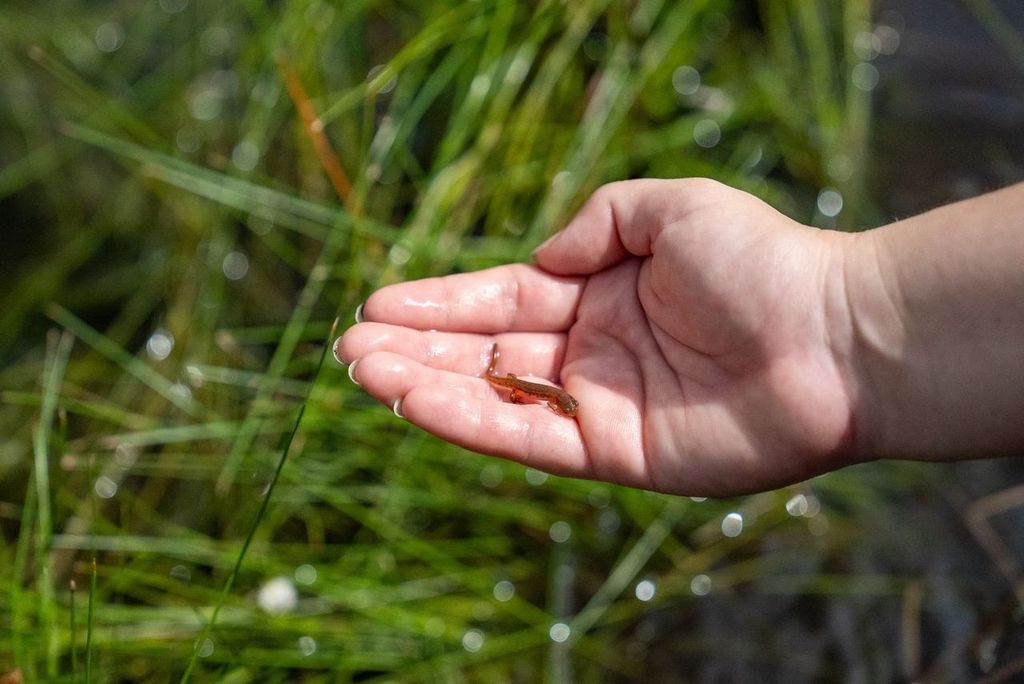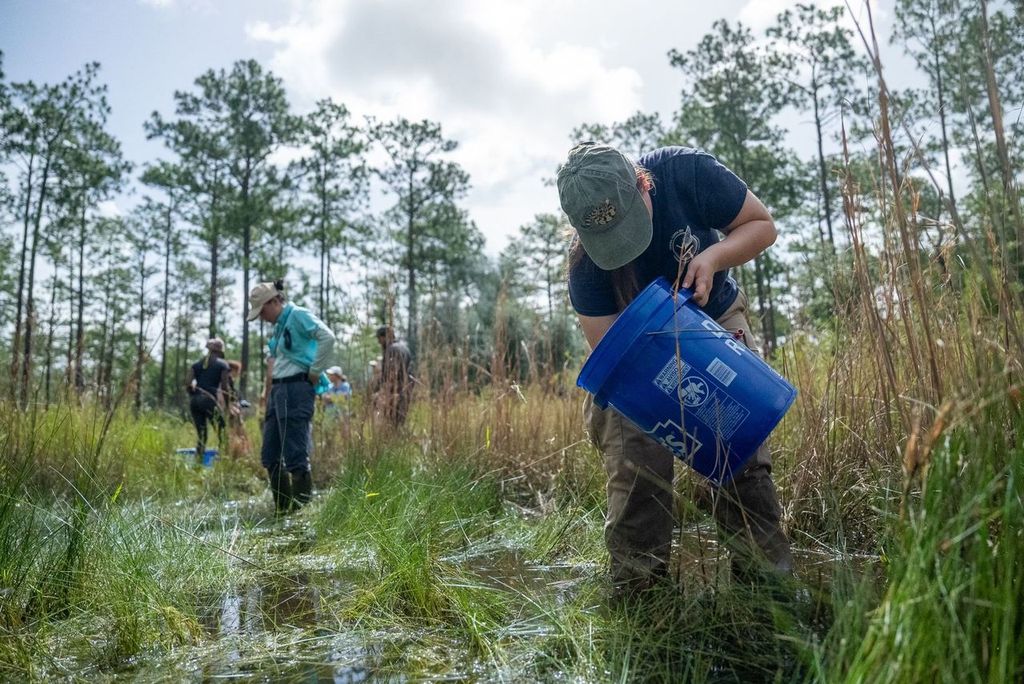Northern Florida recently welcomed some very special new residents—618 striped newts.
The Central Florida Zoo & Botanical Gardens’ Orianne Center for Indigo Conservation (OCIC) and partners released the striped newts near the edge of the Apalachicola National Forest as part of their mission to re-establish the threatened species into its former range. 163 of those striped newts were hatched and raised at the Zoo’s OCIC.

Striped newts hatched at the OCIC are reintroduced in regions where historic populations have disappeared. Extant populations are estimated to occur in only nine ponds in Georgia and 106 ponds in Florida.
Over the past 13 years, the OCIC has worked diligently with a variety of agencies and organizations to restore over 6,000 striped newts to their former habitats. Populations reached undetectable levels in the early 2000s in the Apalachicola National Forest.
“This release marks a critical step in our mission to restore striped newts to their former range,” said Steven Greene, lead protected species technician at the Central Florida Zoo’s Orianne Center for Indigo Conservation. “When there are so few of a species left in the wild, every healthy animal we can restore is a win. Even animals as small as the striped newt play a vital role in the functioning of a healthy native habitat.”
The OCIC works with nonprofit organizations and regulatory agencies to combine expertise and resources to reach program goals. Coastal Plains Institute, a nonprofit organization based in Florida that works to preserve the biotic diversity of the Coastal Plains, oversees the release sites and conducts regular wildlife surveys to identify ideal release windows.

The OCIC, along with other Zoo partners including the Amphibian Foundation (contributed 75 striped newts), the Detroit Zoo (contributed 380 striped newts), and Florida Fish and Wildlife Conservation Commission, participated in the release by breeding newts under human care for release into the wild.
Striped newts face many threats, from fire and drought to vehicle impacts and habitat loss. This release is part of continued efforts to combat the challenges faced by these amphibians.
In addition to the striped newt program, the OCIC is the only captive breeding facility for the eastern indigo snake with the sole purpose of releasing the offspring into regions where historic populations have disappeared. Through the OCIC’s research and breeding efforts, snakes hatched under the team’s care are reintroduced back to their natural habitats and regions where populations have disappeared. To date, a total of 167 eastern indigo snakes have been successfully reintroduced in northern Florida.
To learn more about the OCIC’s conservation programs and how you can help with our mission, click here.